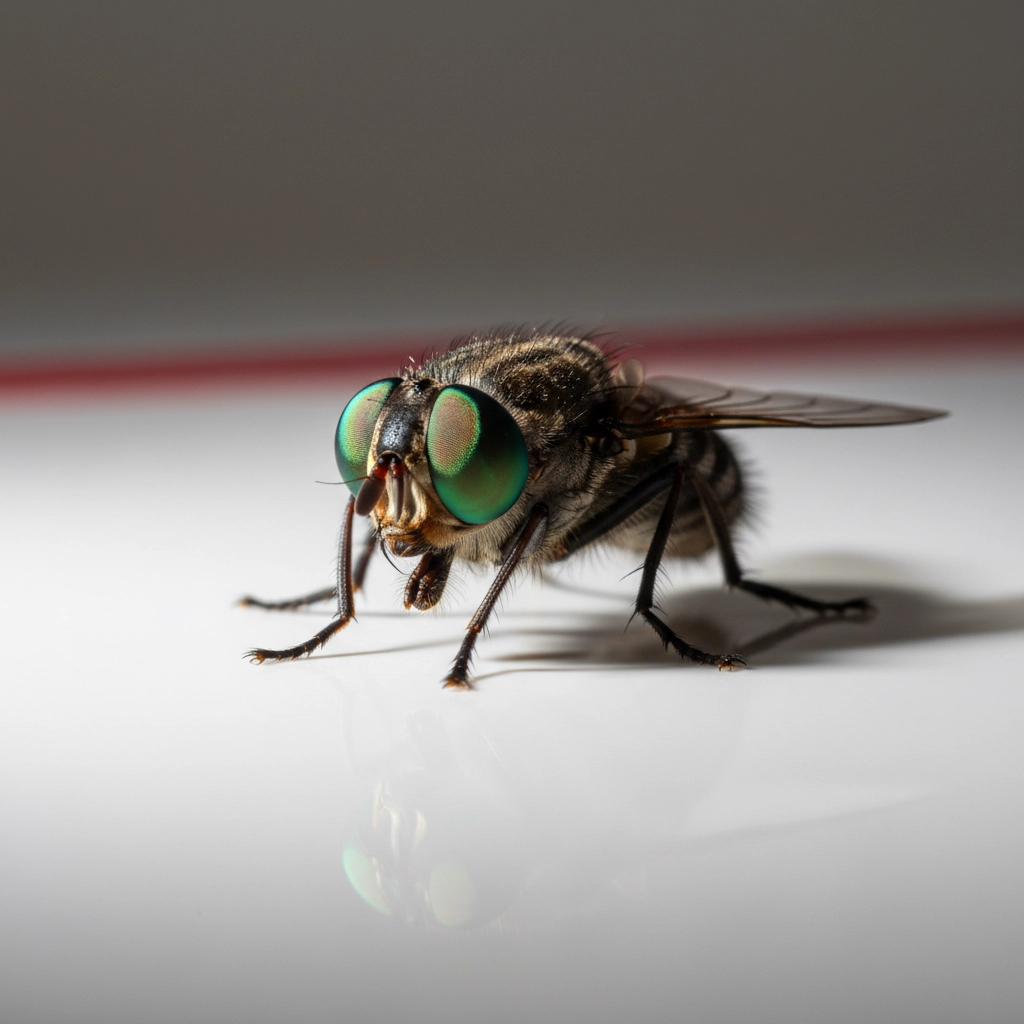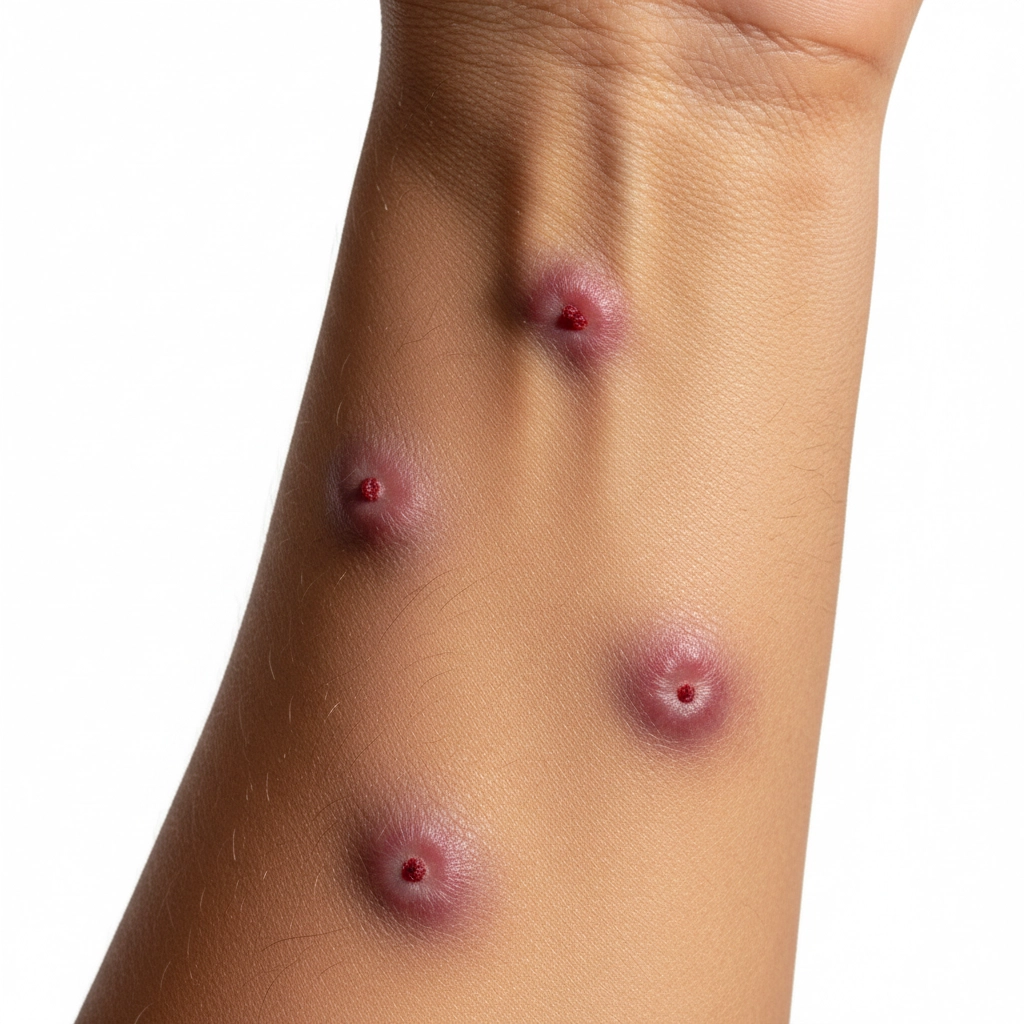Biting Flies in Haliburton County: What Homeowners and Cottage Owners Need to Know
- Targeted Wildlife and Pest Solutions

- Sep 27
- 5 min read
Summer in Haliburton County brings plenty of outdoor activities, but it also brings some unwelcome guests: biting flies. If you've spent time around the lakes, hiking trails, or even in your own backyard, you've probably encountered horse flies, deer flies, or black flies. These three types of biting flies can turn a perfect day outdoors into a frustrating battle against painful bites and persistent buzzing.
Understanding what you're dealing with makes all the difference. Each of these flies has distinct characteristics, behaviors, and risks. More importantly, knowing how to identify and prevent them can help you reclaim your outdoor spaces.
Horse Flies: The Aggressive Giants
Horse flies are the largest and most intimidating of the biting fly trio. These robust insects measure about an inch or more in length, making them hard to miss when they're buzzing around your head. You'll recognize them by their large, prominent compound eyes: some species have distinctive bright green or gold eyes that seem to shimmer in the sunlight.
Their bodies are typically dark brown to black, though some varieties show lighter brown coloring. What makes horse flies particularly troublesome is their persistence. Unlike mosquitoes that might retreat after a swat, horse flies are aggressive and will circle back repeatedly for another attempt at a blood meal.

Horse flies are strong, fast fliers with excellent vision. They're attracted to movement, heat, and carbon dioxide, which is why they often target people engaged in outdoor activities. You'll most commonly encounter them during the hottest part of summer days, particularly around water sources like lakes, ponds, and marshy areas.
These flies breed in wet soil or shallow water, with females laying their eggs on vegetation near water sources. The larvae develop in mud or moist soil, which is why properties near water bodies often see higher horse fly activity.
Deer Flies: The Trail Companions
Deer flies are smaller than horse flies, measuring about a quarter-inch long: roughly the size of a house fly. They have a more slender build and are typically yellow-brown to black with distinctive dark bands across their clear wings. Like horse flies, some deer flies also have those characteristic iridescent green eyes.
What makes deer flies particularly annoying is their tendency to circle your head, especially when you're walking on trails or spending time near wooded areas close to water. They seem to have a preference for attacking around the head and neck area, and they're especially active during spring and early summer months.
Deer flies share similar breeding habits with horse flies, preferring wet soil and shallow water areas for egg-laying. Their larvae are also aquatic or semi-aquatic, developing in muddy areas before emerging as adults.
Black Flies: Small but Mighty
Don't let their size fool you: black flies pack a punch despite being the smallest of the three, measuring only about 1/8-inch long. Also known as "buffalo gnats," these dark-colored flies have a distinctive humpbacked appearance and broad wings relative to their body size.
Black flies are most commonly found near running water sources like streams and rivers, where their larvae attach to submerged rocks and vegetation. Unlike horse flies and deer flies that prefer still water for breeding, black flies need flowing water for their development.

These tiny flies are notorious for their ability to find any exposed skin, particularly favoring areas where clothing fits tightly against your body. They're most active during late spring and early summer, and their bites can cause significant swelling and prolonged itching.
Health Risks and Bite Characteristics
Each type of biting fly presents different health concerns and bite experiences. Understanding these differences helps you respond appropriately and know when to seek medical attention.
Horse flies and deer flies use scissor-like mouthparts that literally cut into your skin to create blood flow, which they then lap up. This crude feeding method makes their bites immediately painful and often leaves a small wound that may bleed. The bite sites typically develop into raised, red welts that can be itchy and tender for several days.
Deer flies can potentially transmit tularemia, a bacterial disease also known as "rabbit fever." While uncommon, this disease can cause serious illness if not treated promptly. Horse flies may also carry pathogens, though disease transmission is relatively rare.
Black flies have a different feeding strategy: they inject an anticoagulant while feeding, which prevents blood clotting and can cause bites to bleed and swell considerably. Black fly bites often result in large, swollen areas that can take days or even weeks to fully heal. Some people experience severe allergic reactions to black fly bites, requiring medical attention.
Prevention Strategies That Work
The key to managing biting flies is prevention. Since these flies are strongly attracted to movement, heat, and carbon dioxide, you can take several steps to make yourself less appealing to them.
Clothing choices make a significant difference. Wear light-colored clothing, as dark colors provide clearer visual targets for these flies. Long sleeves and pants provide physical barriers, though you'll want breathable fabrics during hot weather. Tightly woven materials work better than loose weaves that flies might penetrate.
Timing your activities can help you avoid peak fly periods. Horse flies and deer flies are most active during the warmest parts of the day, while black flies tend to be most troublesome during dawn and dusk hours. Planning outdoor activities during less active periods can significantly reduce your exposure.

Environmental management around your property reduces breeding opportunities. Eliminate standing water in containers, ensure proper drainage in landscaping, and clear dense vegetation where adult flies rest. If your property is near natural water sources, consider creating buffer zones with less vegetation between water areas and frequently used outdoor spaces.
Personal protection methods include using fans on patios and outdoor seating areas, as the air circulation makes it difficult for flies to land on you. Fine mesh screens on windows and doors help keep flies out of indoor spaces, though the smallest black flies might still find their way through standard screening.
Managing Severe Infestations
Sometimes prevention isn't enough, especially if your property has ideal breeding conditions or you're located in a high-activity area. When biting flies become a serious problem, professional intervention might be necessary.
Commercial traps designed to attract and capture biting flies can provide some relief for specific areas. These traps typically use heat, movement, or chemical attractants to lure flies away from people and into capture devices.
For properties with persistent problems, professional pest control services can assess your specific situation and recommend targeted treatment options. This might include habitat modification, strategic insecticide applications, or integrated management approaches that address both adult flies and their breeding sites.
When to seek professional help: If biting flies are preventing you from enjoying your outdoor spaces, if you're experiencing unusually high numbers of flies around your property, or if you have vulnerable individuals (children, elderly, or those with compromised immune systems) who are being heavily affected by fly activity.
Treatment for Bites
When you do get bitten, proper treatment can minimize discomfort and prevent secondary infections. Clean the bite area with soap and water, apply ice to reduce swelling, and avoid scratching to prevent infection. Over-the-counter antihistamines can help reduce itching and swelling.
Watch for signs of infection such as increased redness, warmth, pus, or red streaking from the bite site. Seek medical attention if you develop fever, severe swelling, or if bite wounds don't begin healing within a few days.
Understanding and managing biting flies in Haliburton County requires a combination of identification skills, prevention strategies, and sometimes professional assistance. While these flies are a natural part of the local ecosystem, you don't have to let them ruin your outdoor enjoyment. With the right approach, you can minimize their impact and get back to enjoying everything the area has to offer.
Comments